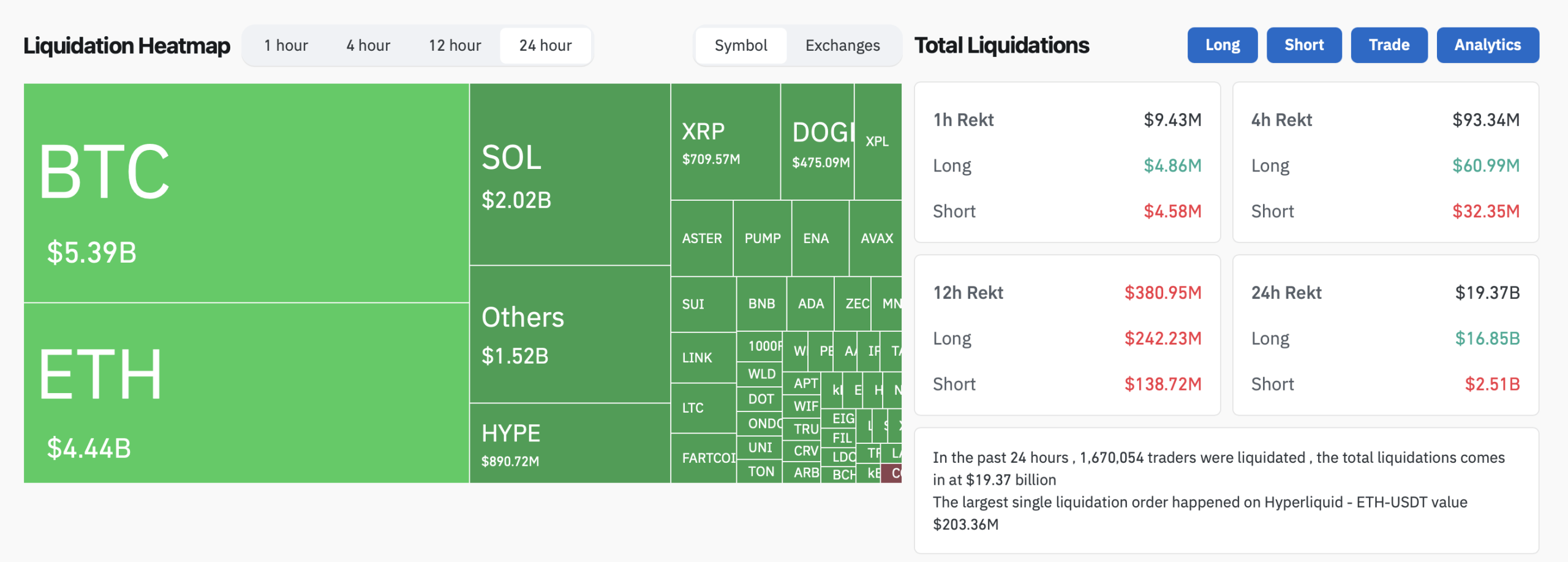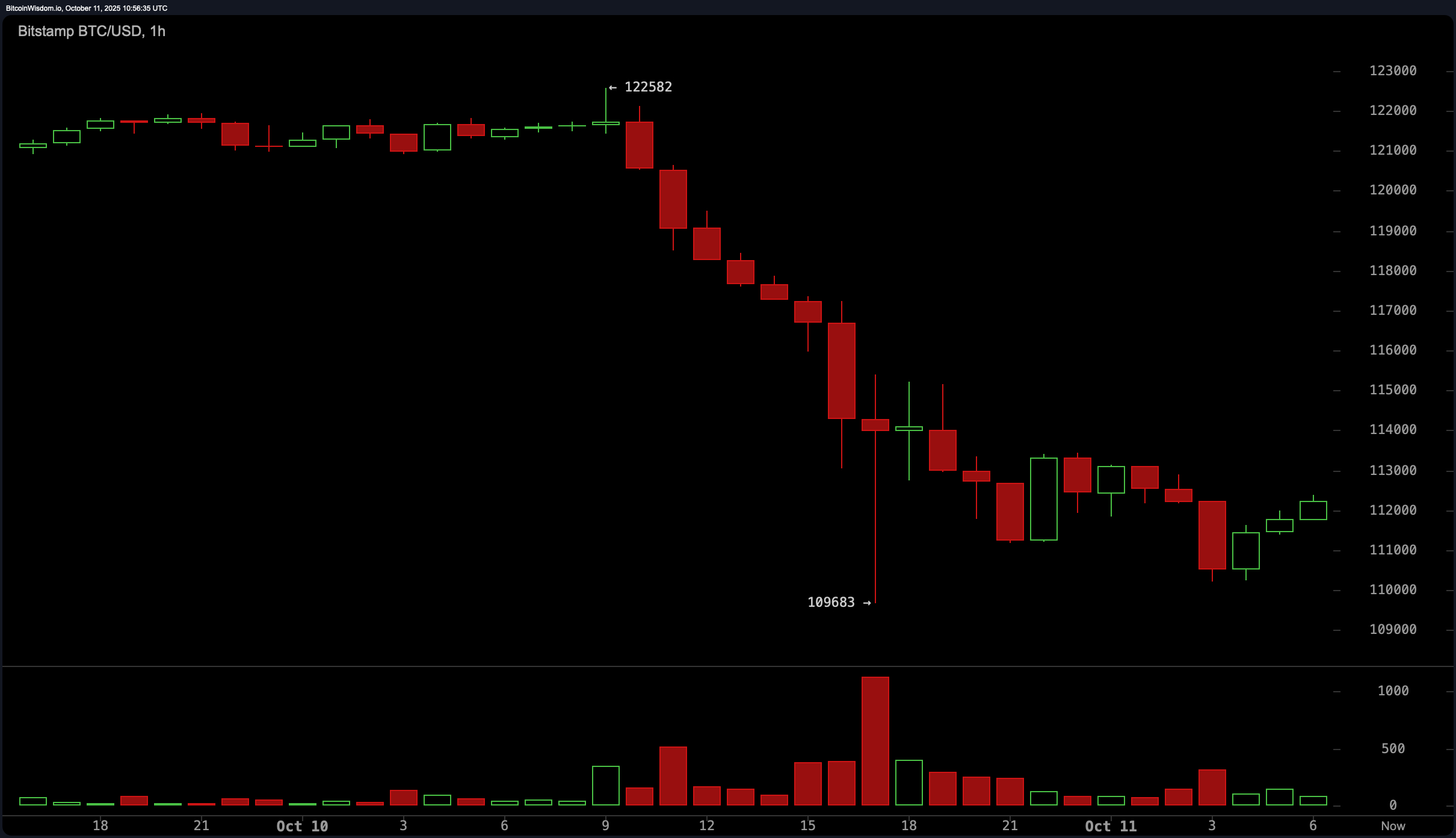Friday was a rollercoaster for crypto markets, as digital assets struggled to recover from one of the most volatile trading days on record. Data from derivatives platforms showed that nearly $20 billion in long and short positions were liquidated within 24 hours—marking the largest single-day wipeout in crypto history and highlighting just how fragile leverage can make even the strongest rallies.
Every cycle, similar social media posts erupt the moment the market dips. Names change, screenshots differ, but the formula stays the same: a few whale or major exchange transfers, a blood-red chart, and instant accusations. These posts attract thousands of likes because they tap into traders’ deepest insecurity—believing someone else is secretly in control. But blockchain transparency doesn’t equal understanding; correlation isn’t causation.
The problem is that wallet data looks dramatic but lacks context. A massive deposit to a major platform might be internal rebalancing, not liquidation prep. OTC desks often move funds to meet client redemptions or arbitrage opportunities. Without timestamps tied to executed trades, onchain flows tell only half the story. And half-stories, when paired with panic, breed myths.

24-hour liquidation data from coinglass.com on Oct. 11, 2025.
Liquidations also took a great deal of the blame, but context matters. Earlier in the week, reports showed that more than $5.3 billion in bitcoin and ethereum options were set to expire on one major derivatives platform alone. At the same time, BTC hovered just above its “max pain” level—the strike price where most options expire worthless. Combine that with the bullish energy of “Uptober,” and overleveraged long positions stacked up fast, turning enthusiasm into a feeding frenzy for liquidations.
Crypto remains one of the few markets where narratives travel faster than facts. A tweet showing a “$700 million deposit” gets tens of thousands of views before anyone checks whether the funds even moved to spot markets. It’s the digital equivalent of yelling “fire” in a crowded room—it’s always chaotic and messy. Yet most data analysts know that genuine manipulation leaves far clearer footprints than this.

Bitcoin’s large slide from Oct. 10 to Oct. 11, 2025.
There’s also the simple math of liquidity. When prices are high, spreads tighten, and leverage increases. If a few overleveraged positions unwind, the cascade effect looks catastrophic, like nearly $20 billion in wipe-outs, but it’s just a feedback loop—bots selling into weakness, traders reacting emotionally, and automated liquidations doing the rest. The same phenomenon happens in equities, just without the memes and laser eyes.
Still, it’s easy to sympathize with the believers. Crypto has seen real manipulation in the past. From thinly traded altcoins to coordinated wash trades, the scars are there. The crypto community hasn’t forgotten the chaos of FTX and Luna, two collapses that shook market confidence and reshaped digital asset risk awareness—a reminder that in crypto, trust can vanish faster than liquidity.
But assuming every major drawdown is a grand scheme gives too much credit to a handful of actors and not enough to the chaotic efficiency of free markets. Sometimes, bitcoin just corrects—no puppet strings required.
Major platforms, meanwhile, operate under growing scrutiny and regulation. Internal risk teams monitor inflows and outflows continuously to avoid systemic shocks. The idea that they’d risk their credibility by intentionally crashing prices defies logic—and profit. Their business depends on trust and volume, both of which vanish when traders suspect foul play.
The irony is that these “market dump” narratives can actually worsen volatility. Retail traders panic-sell, whales step back, and liquidity thins further—making the next dip even sharper. In that way, the conspiracy becomes self-fulfilling, not because it’s true, but because enough people believe it. Fear is a powerful market mover, sometimes stronger than fundamentals.
Crypto’s transparency is both its greatest strength and its biggest curse. Every wallet move and liquidation becomes a headline; every transaction, a theory. But seasoned investors know that noise isn’t all the evidence. Until proven otherwise, most of these dumps are just the market being what it’s always been—fast, emotional, and brutally efficient. Sometimes the simplest explanation is also the truest one.
So the next time the feed floods with liquidation charts, wallet IDs, and blood emojis, take a breath. Ask whether the data proves manipulation or merely reflects movement. Because in crypto, perception shapes price—and panic often prints the story before reality does.
Lastly, whether you’re riding the market long or short, one thing’s for sure — the current U.S. president has a real talent for shaking things up online. A single Truth Social post from the big man can flip the mood faster than a meme coin pump, turning a bullish run into a bearish nosedive before you’ve even refreshed your feed.
💡FAQ
- Are large wallet transfers proof of manipulation? Not usually; many are internal movements or OTC settlements.
- Can manipulation happen? Sure, it can happen, but there needs to be valid proof.
- Why does Bitcoin drop so sharply sometimes? Liquidations, leverage, and sentiment shifts can cascade quickly.
- What’s the best trader reaction to these rumors? Verify data, stay calm, and avoid trading based solely on social media panic.
免责声明:本文章仅代表作者个人观点,不代表本平台的立场和观点。本文章仅供信息分享,不构成对任何人的任何投资建议。用户与作者之间的任何争议,与本平台无关。如网页中刊载的文章或图片涉及侵权,请提供相关的权利证明和身份证明发送邮件到support@aicoin.com,本平台相关工作人员将会进行核查。



